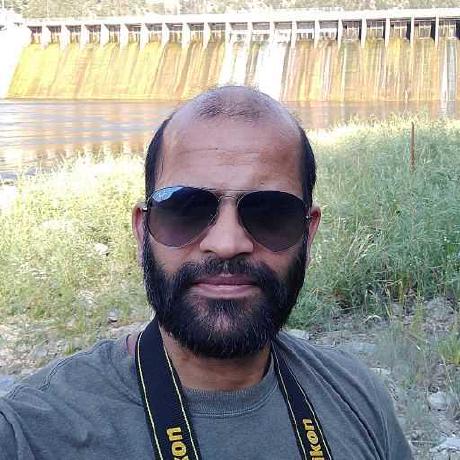Build Kubernetes cluster in Docker Desktop with k3d
 Thirumurthi S
Thirumurthi SCreating a working environment for Kubernetes using K3D
- In this blog will be creating a workable environment in Docker Desktop.
What is K3s?
- K3S is a lightweight kubernetes distribution that can run on production, and certified by CNCF.
- K3S has memory footprint since the etcd, alpha features are removed in this distribution.
- K3S uses SQLLite as default storage, for persisted storage we can use MySql or PostGres.
- K3S is built for IoT devices and Edge computing.
Terminology used in K3s:
Serverthis is the control-planeAgentthis is the worker node
On a single node K3s runs the server and agent as a single process.
What is K3d?
- K3d is a lightweight wrapper to run K3S (Rancher Lab's) in docker.
- K3d makes it very easy to create single or multi node K3s cluster in docker, for local development.
Pre-requisites:
- Docker desktop already installed in the Windows machine.
- The
Chocolateypackage manager installed.
Note
How K3D is different from Minikube, K3D runs in Docker as container, Minikube requires VM. This can be used in Dev and Test environment, not intended for production. K3s can be used for production on Linux based systems.
Install K3d in local machine
- We cab install K3d in Windows machine using
Chocolateypackage manager. - For more details refer the
Chocolateydocumentation, this shouldn't be used in production. - Use command prompt in Administrator mode.
> choco install k3d
Check the version of the K3d executable
> k3d --version
k3d version v5.4.3
k3s version v1.23.6-k3s1 (default)
Create a single node cluster
- First make sure the Docker Desktop is running.
- Below command will create a single node cluster
> k3d cluster create my-cluster-01
- To list the cluster
> k3d cluster list
- To delete the cluster
> k3d cluster delete my-clister-01
Use kubectl command to validate cluster
- To get cluster info
> kubectl cluster-info
- To get the nodes created, use below command
> kubectl get nodes
- To run a simple busybox in removable and with interactive terminal
> kubectl run my-busybox --rm -it --image=busybox
- From differnet command prompt or terminal, issue below command to veiw the running pod.
> kubectl get pods
Note
In case the kubectl command didn't connect to the cluster use below command to merge context to
kubeconfig
k3d kubeconfig merge my-cluster-01 --kubeconfig-switch-context
Why docker container ls displays 3 container for single cluster?
- The third container is a loadbalancer to handle the network traffic.
This will act as proxy to request traffic to the server, acting as an ingress.
Docker container list
CONTAINER ID IMAGE COMMAND CREATED STATUS PORTS NAMES 3a7f313a8af3 ghcr.io/k3d-io/k3d-tools:5.4.3 "/app/k3d-tools noop" About a minute ago Up About a minute k3d-my-cluster-01-tools e8c727ebef9e ghcr.io/k3d-io/k3d-proxy:5.4.3 "/bin/sh -c nginx-pr…" About a minute ago Up About a minute 80/tcp, 0.0.0.0:53872->6443/tcp k3d-my-cluster-01-serverlb b58a0c7641e1 rancher/k3s:v1.23.6-k3s1 "/bin/k3s server --t…" 2 minutes ago Up About a minute k3d-my-cluster-01-server-0
Create a multi-node cluster
- Below command will create a multi node cluster, with 2 servers and 3 woker node
> k3d cluster create my-multi-cluster --servers 2 --agents 3 --port "8888:80@loadbalancer" --port "8889:443@loadbalancer"
- Output of
kubectl get pods
C:\user\learn\k8s>kubectl get nodes
NAME STATUS ROLES AGE VERSION
k3d-mycluster-agent-0 Ready <none> 37s v1.23.6+k3s1
k3d-mycluster-agent-1 Ready <none> 37s v1.23.6+k3s1
k3d-mycluster-agent-2 Ready <none> 37s v1.23.6+k3s1
k3d-mycluster-server-0 Ready control-plane,etcd,master 68s v1.23.6+k3s1
k3d-mycluster-server-1 Ready control-plane,etcd,master 53s v1.23.6+k3s1
- By default Docker Desktop doesn't allow access to the containers in that case we can use port forwarding.
Note
-p, --port [HOST:][HOSTPORT:]CONTAINERPORT[/PROTOCOL][@NODEFILTER] => Map ports from the node containers (via the serverlb) to the host (Format: [HOST:][HOSTPORT:]CONTAINERPORT[/PROTOCOL][@NODEFILTER]) - Example: `k3d cluster create --agents 2 -p 8080:80@agent:0 -p 8081@agent:1`
Rancher desktop alternate to Docker Desktop
Alternatively we can create Kuberentes cluster using Rancher Desktop, no need for Docker desktop.
Subscribe to my newsletter
Read articles from Thirumurthi S directly inside your inbox. Subscribe to the newsletter, and don't miss out.
Written by
